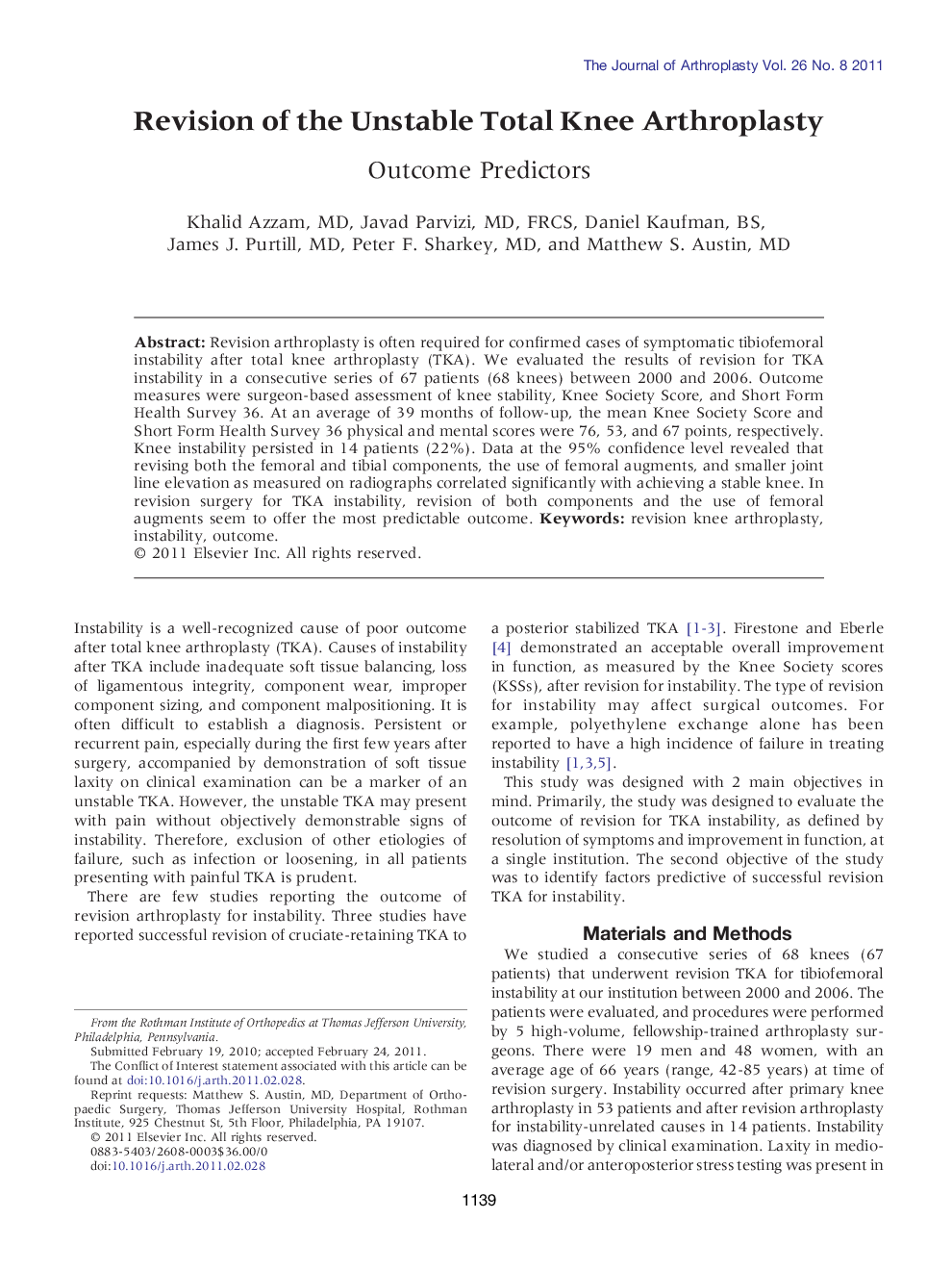| Article ID | Journal | Published Year | Pages | File Type |
|---|---|---|---|---|
| 4062678 | The Journal of Arthroplasty | 2011 | 6 Pages |
Revision arthroplasty is often required for confirmed cases of symptomatic tibiofemoral instability after total knee arthroplasty (TKA). We evaluated the results of revision for TKA instability in a consecutive series of 67 patients (68 knees) between 2000 and 2006. Outcome measures were surgeon-based assessment of knee stability, Knee Society Score, and Short Form Health Survey 36. At an average of 39 months of follow-up, the mean Knee Society Score and Short Form Health Survey 36 physical and mental scores were 76, 53, and 67 points, respectively. Knee instability persisted in 14 patients (22%). Data at the 95% confidence level revealed that revising both the femoral and tibial components, the use of femoral augments, and smaller joint line elevation as measured on radiographs correlated significantly with achieving a stable knee. In revision surgery for TKA instability, revision of both components and the use of femoral augments seem to offer the most predictable outcome.
